SHIBATA ZESHIN 柴田是真 (1807–1891) ZANSAISAGE OR TONKOTSU (CONTAINER FOR FOOD SCRAPS) WITH DESIGN OF WAVES AND PLOVERS 波千鳥図蒔絵頓骨 Meiji era (1868–1912), circa 1870–1890 With tapering sides, rounded corners, and overhanging lid, probably of wood, covered in dark-brown, almost black seidō-nuri, with a design of chidori in gold takamaki-e and waves in red lacquer; signed in scratched characters toward the base of one of the shorter sides Zeshin 是真 6.6cm × 8.9cm × 4.7cm (2⅝in × 3½in × 1⅞in) With fitted wood tomobako inscribed Zeshin-ō saku nami ni chidori maki-e tonkotsu Kakan'an Chikushin kan narabi ni dai 是真翁作 波に千鳥蒔絵頓骨 可寛菴竹真鑒並題 (Tonkotsu with waves and plovers in maki-e by the venerable Zeshin, certified and inscribed by Kakan'an Chikushin), with seal Yūsai 有斎, and an open-weave silk bag with a tying-cord and lacquered netsuke in the form of a covered jar (4) Provenance: Hirano Family, Hyakuraku-an Collection 平野家(百楽庵)旧藏 Sold in these Rooms, 5 November 2014, lot 1 Exhibited and Published: Nezu Bijutsukan (Nezu Museum) 2012, cat. no. 31 Published: Hirano 1998, cat. no. 56 Fußnoten The design motif of waves and chidori, variously translated as 'dotterels', 'wave-birds', or 'plovers', has been used in Japanese lacquer for around a millennium and owes its origin to the poetic idea of small birds being formed from the spray of ocean waves; ever the innovator, Zeshin shows many of the birds on the ground rather than in flight. The waves were painted by hand in wet lacquer, an even more laborious method than Zeshin's trademark combed seigaiha-nuri technique. For more information regarding Shōji Chikushin, please refer to the footnote to lot 9.
SHIBATA ZESHIN 柴田是真 (1807–1891) ZANSAISAGE OR TONKOTSU (CONTAINER FOR FOOD SCRAPS) WITH DESIGN OF WAVES AND PLOVERS 波千鳥図蒔絵頓骨 Meiji era (1868–1912), circa 1870–1890 With tapering sides, rounded corners, and overhanging lid, probably of wood, covered in dark-brown, almost black seidō-nuri, with a design of chidori in gold takamaki-e and waves in red lacquer; signed in scratched characters toward the base of one of the shorter sides Zeshin 是真 6.6cm × 8.9cm × 4.7cm (2⅝in × 3½in × 1⅞in) With fitted wood tomobako inscribed Zeshin-ō saku nami ni chidori maki-e tonkotsu Kakan'an Chikushin kan narabi ni dai 是真翁作 波に千鳥蒔絵頓骨 可寛菴竹真鑒並題 (Tonkotsu with waves and plovers in maki-e by the venerable Zeshin, certified and inscribed by Kakan'an Chikushin), with seal Yūsai 有斎, and an open-weave silk bag with a tying-cord and lacquered netsuke in the form of a covered jar (4) Provenance: Hirano Family, Hyakuraku-an Collection 平野家(百楽庵)旧藏 Sold in these Rooms, 5 November 2014, lot 1 Exhibited and Published: Nezu Bijutsukan (Nezu Museum) 2012, cat. no. 31 Published: Hirano 1998, cat. no. 56 Fußnoten The design motif of waves and chidori, variously translated as 'dotterels', 'wave-birds', or 'plovers', has been used in Japanese lacquer for around a millennium and owes its origin to the poetic idea of small birds being formed from the spray of ocean waves; ever the innovator, Zeshin shows many of the birds on the ground rather than in flight. The waves were painted by hand in wet lacquer, an even more laborious method than Zeshin's trademark combed seigaiha-nuri technique. For more information regarding Shōji Chikushin, please refer to the footnote to lot 9.
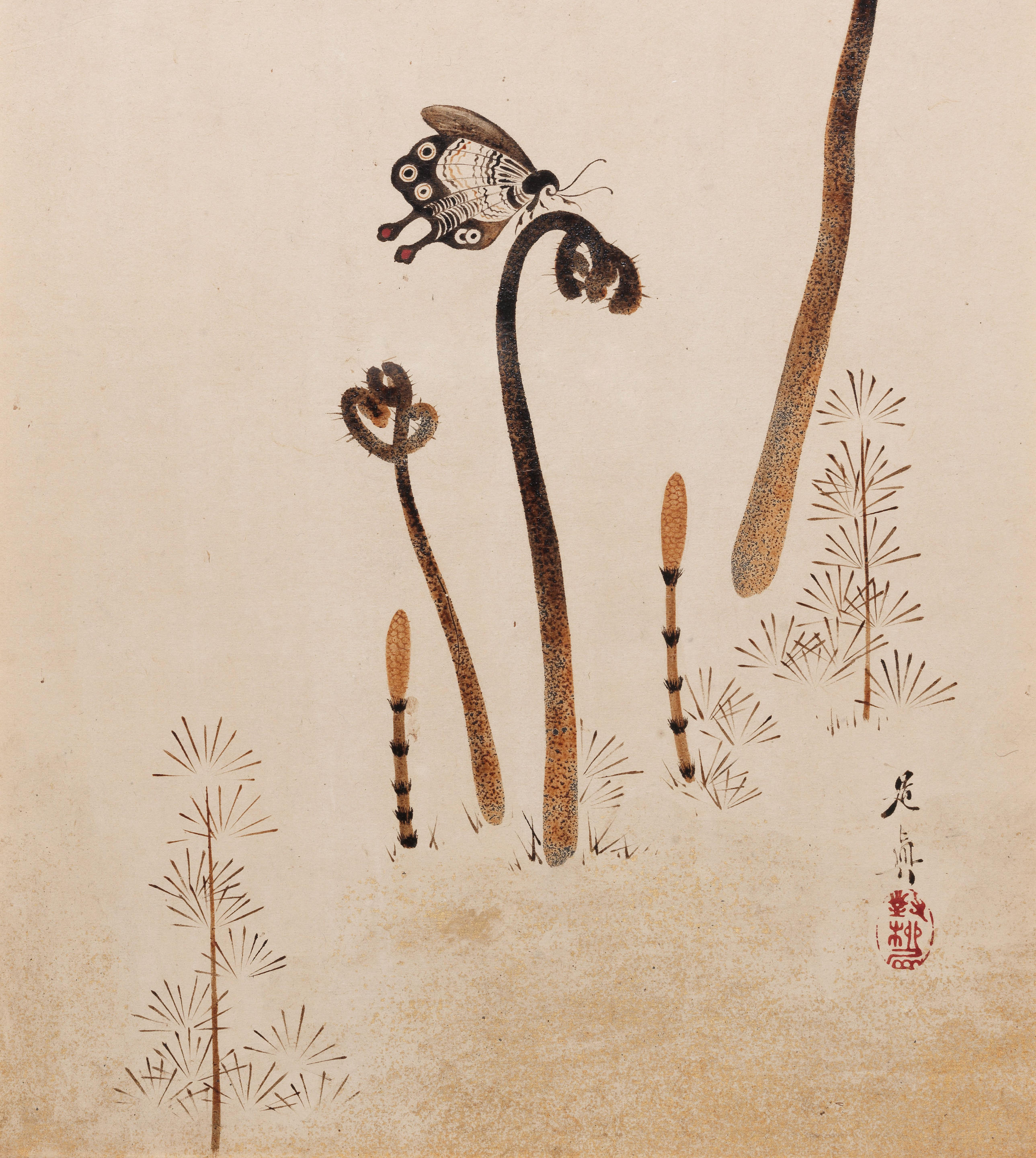
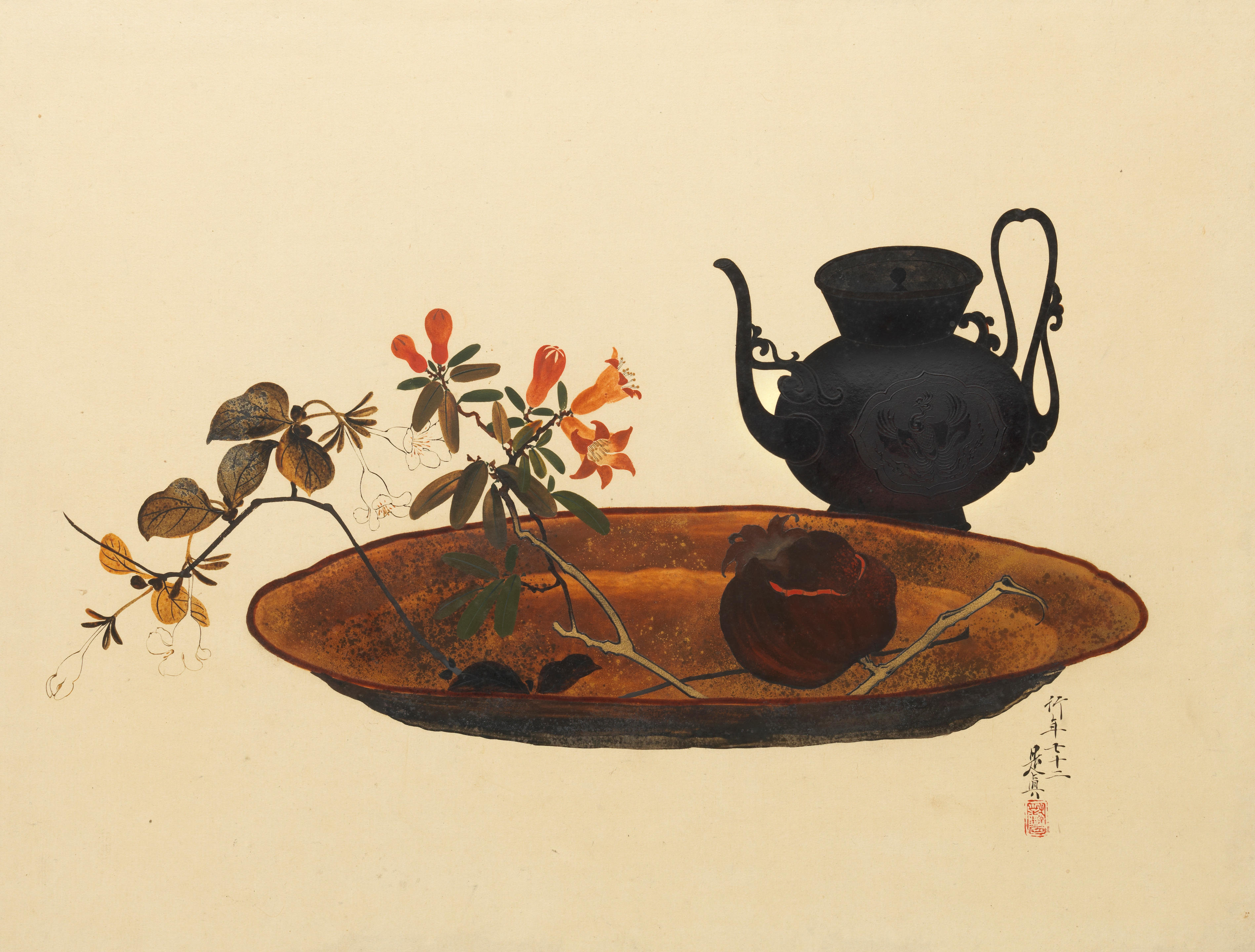
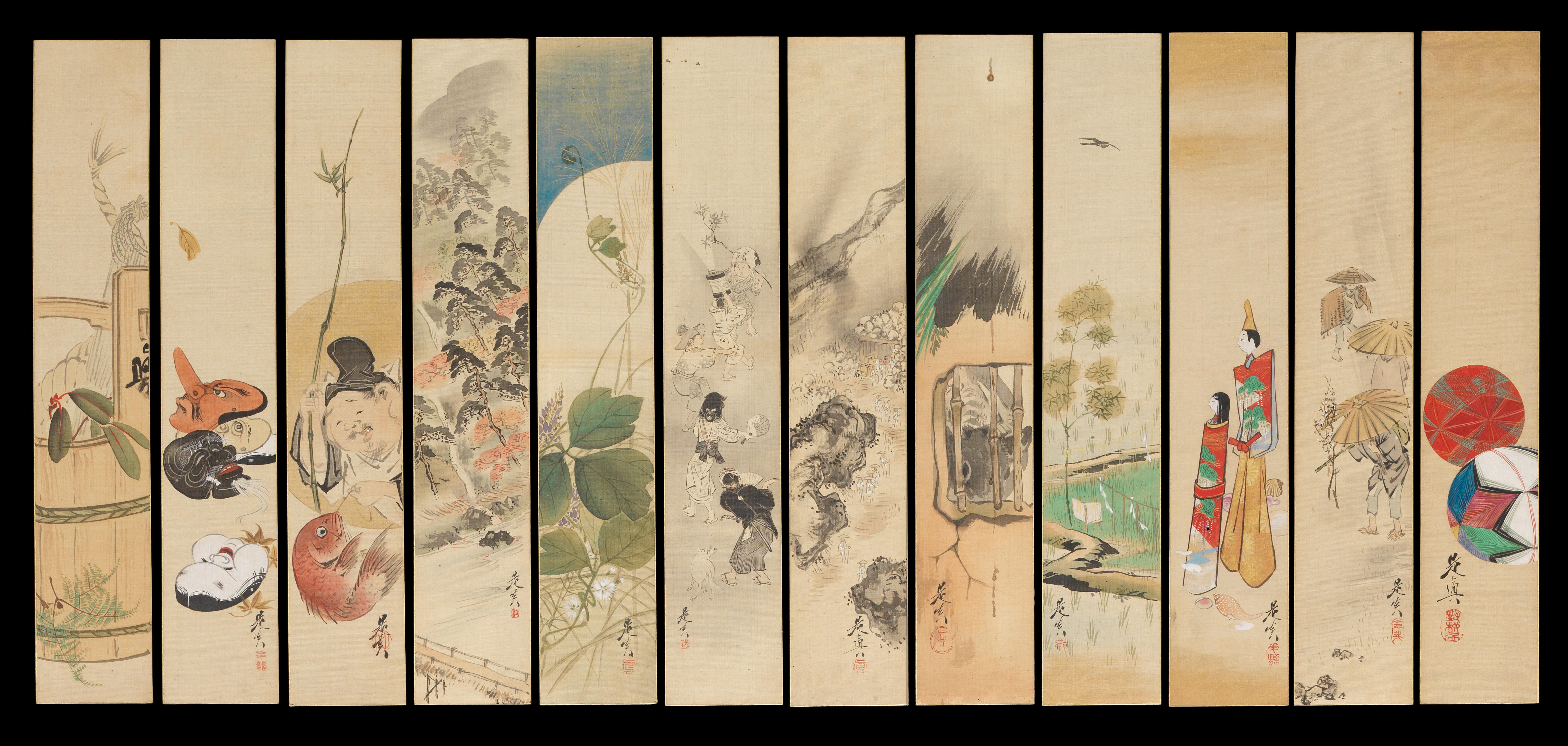
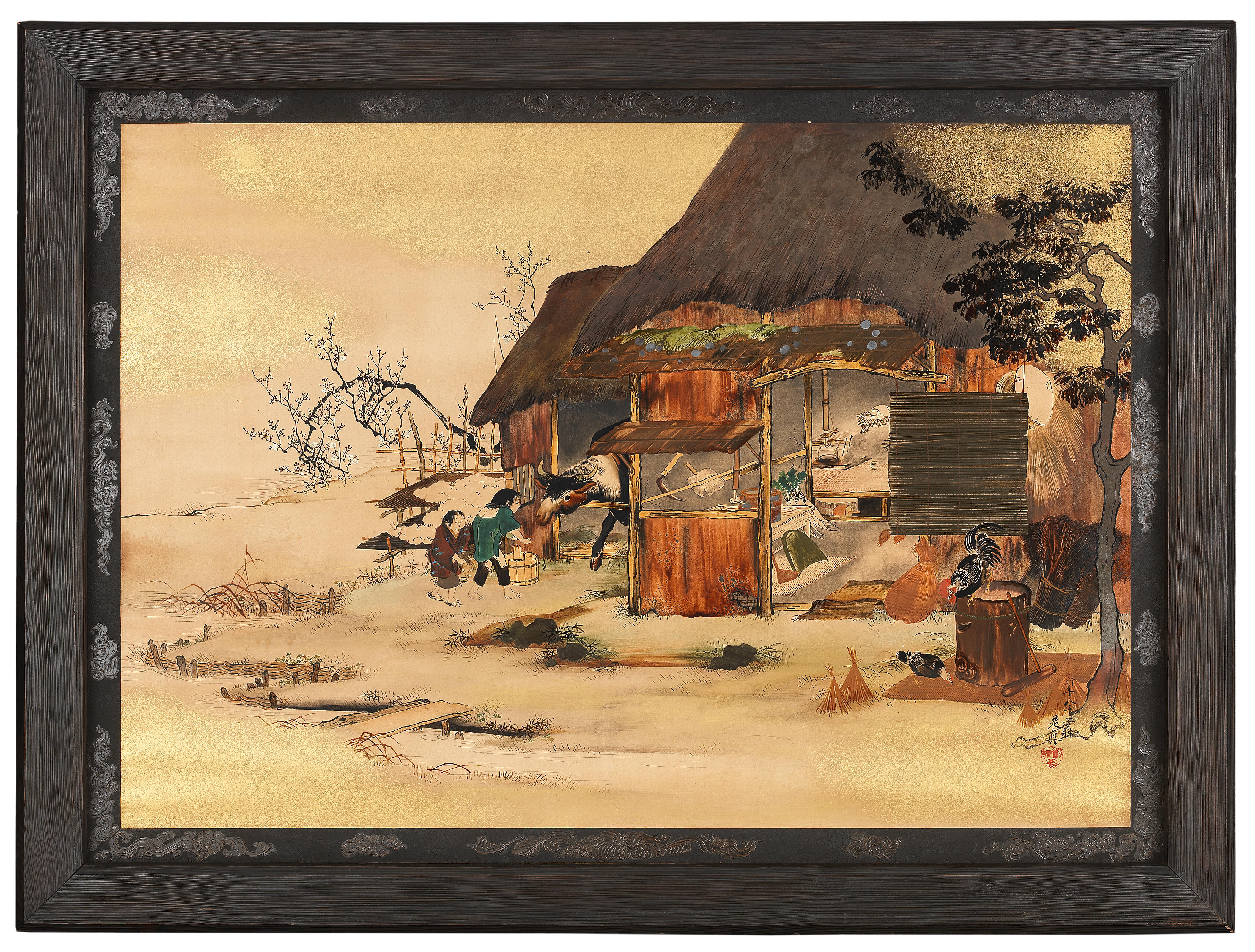
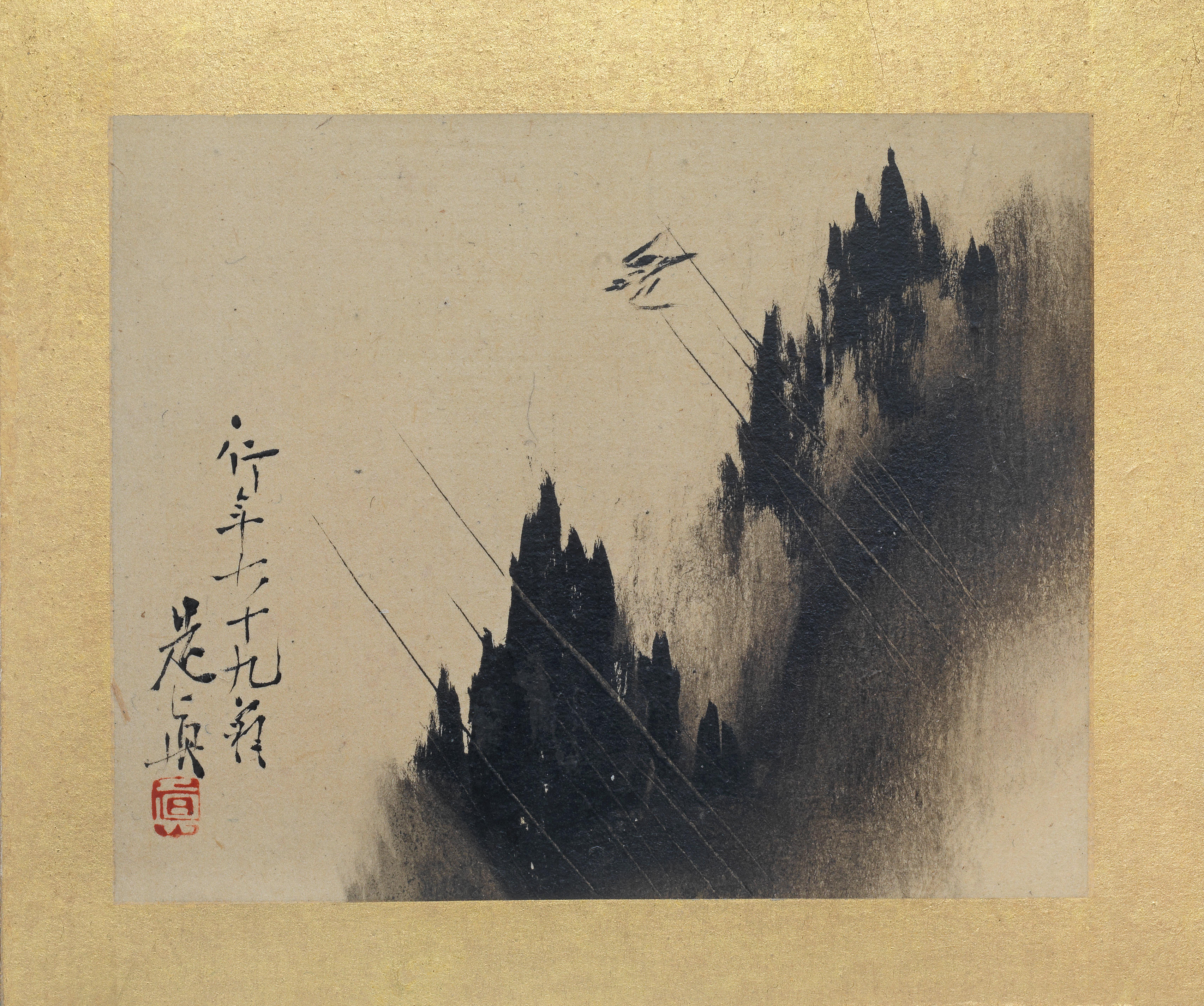
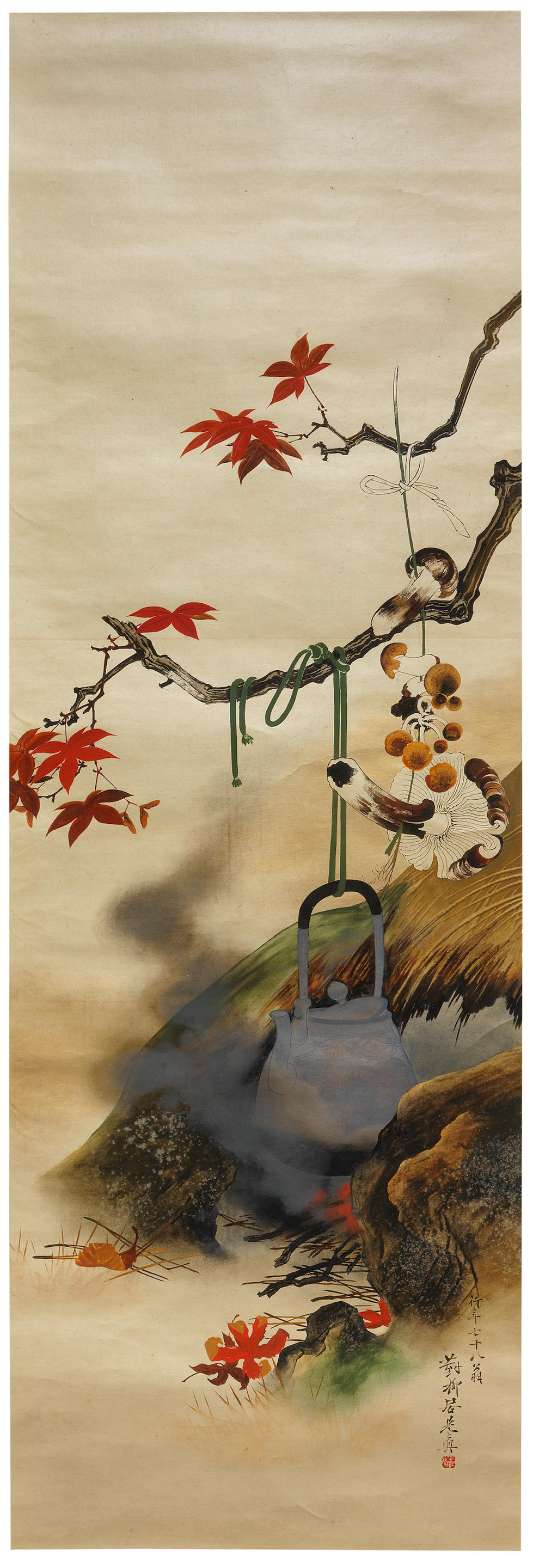
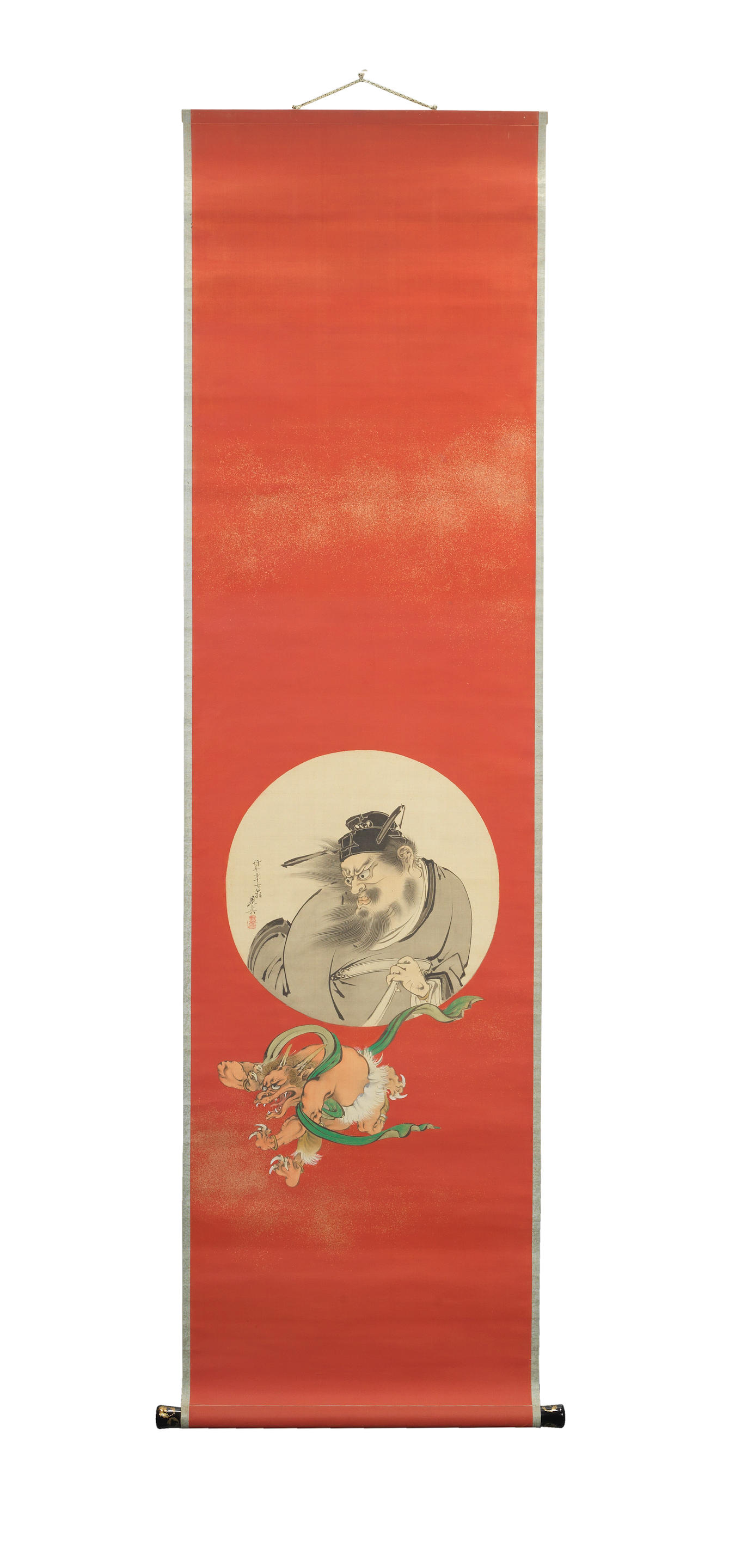

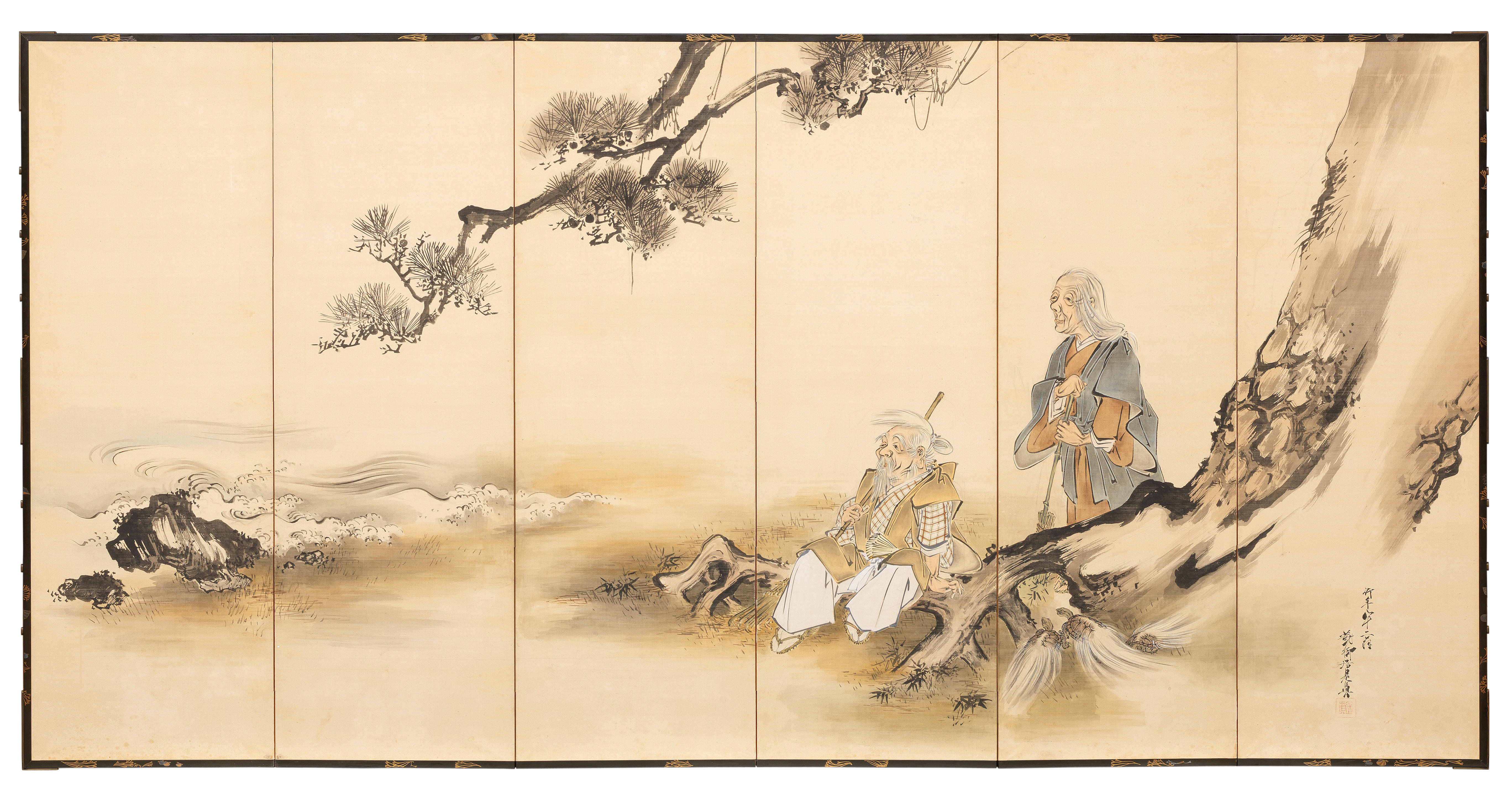
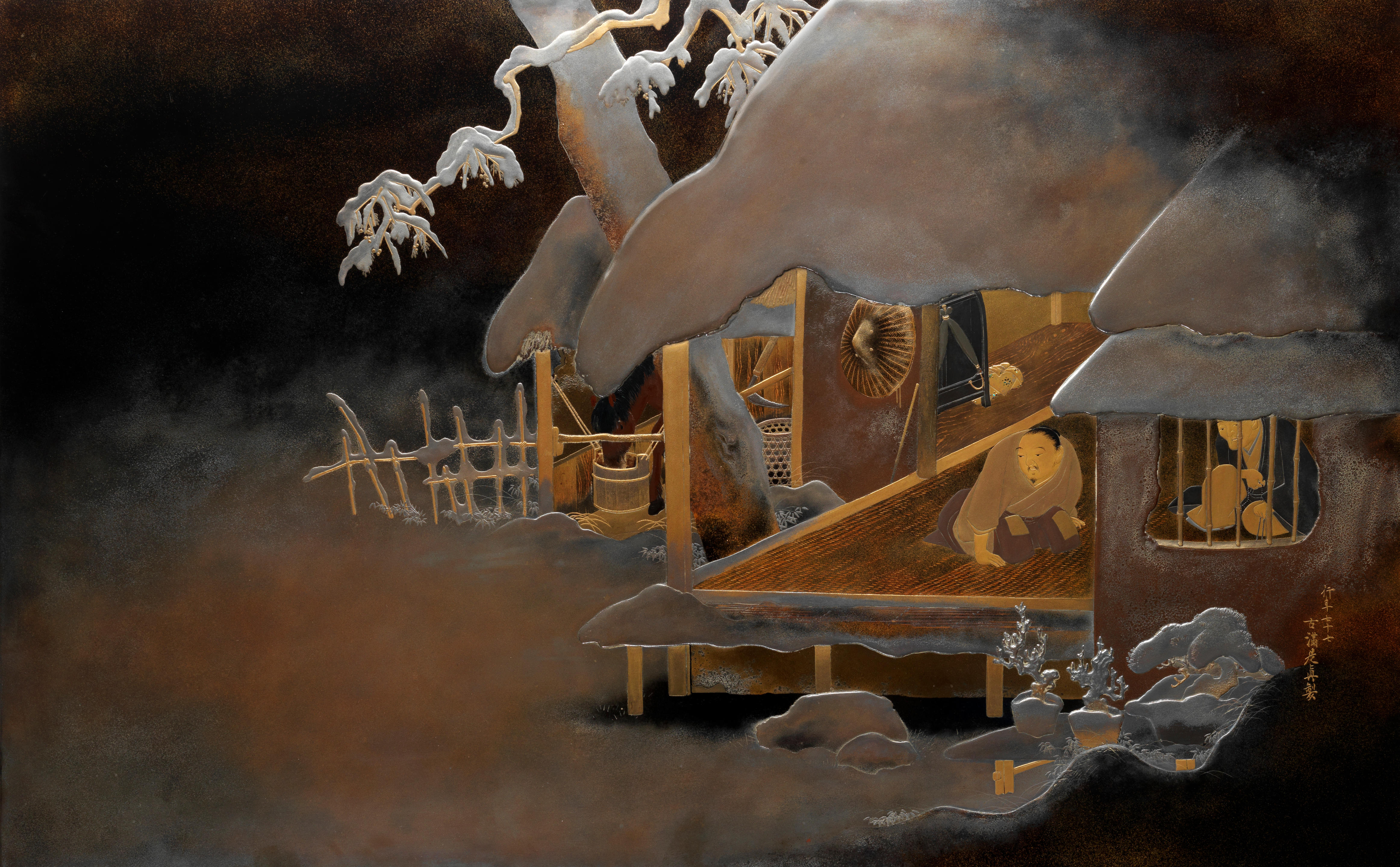
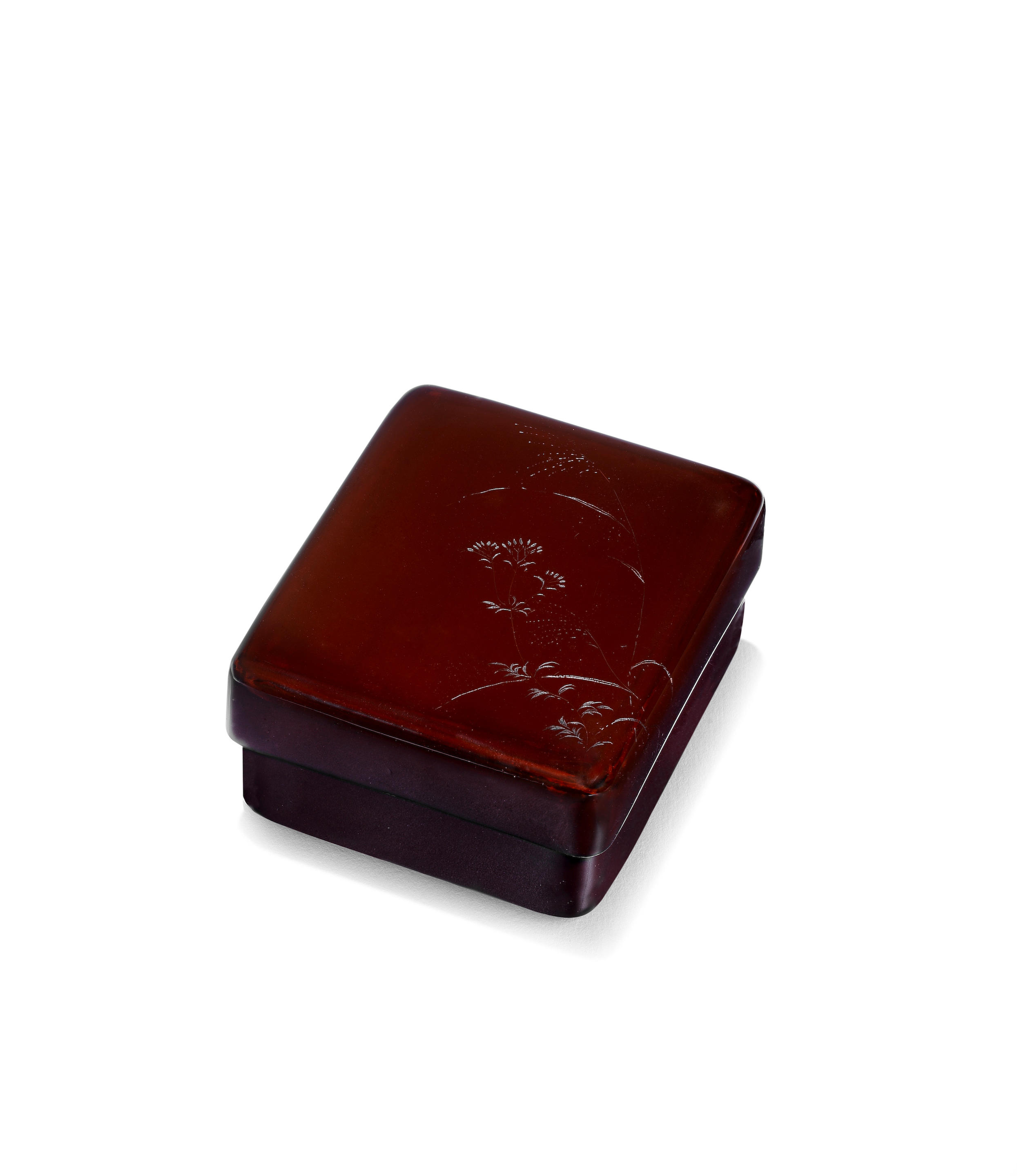
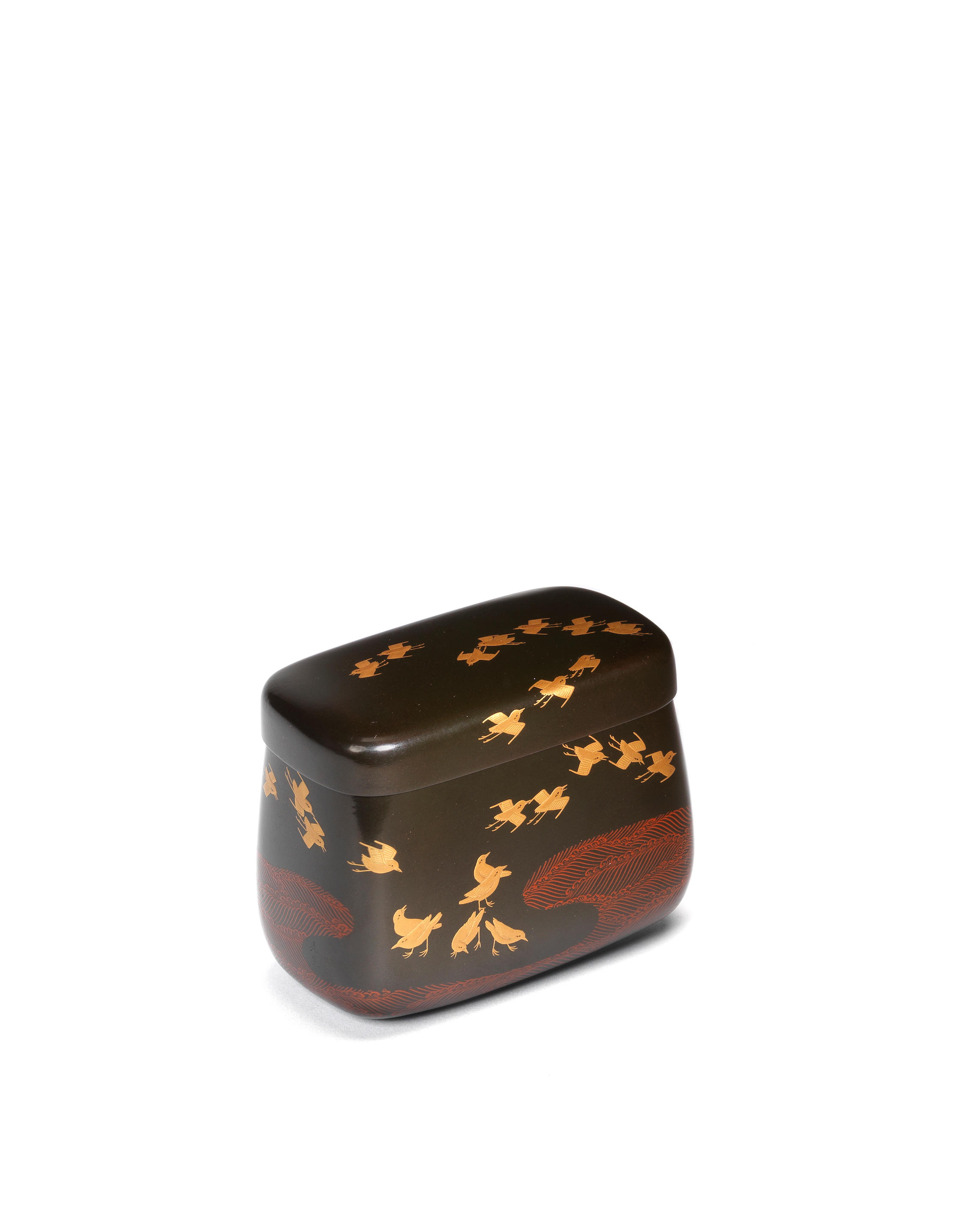
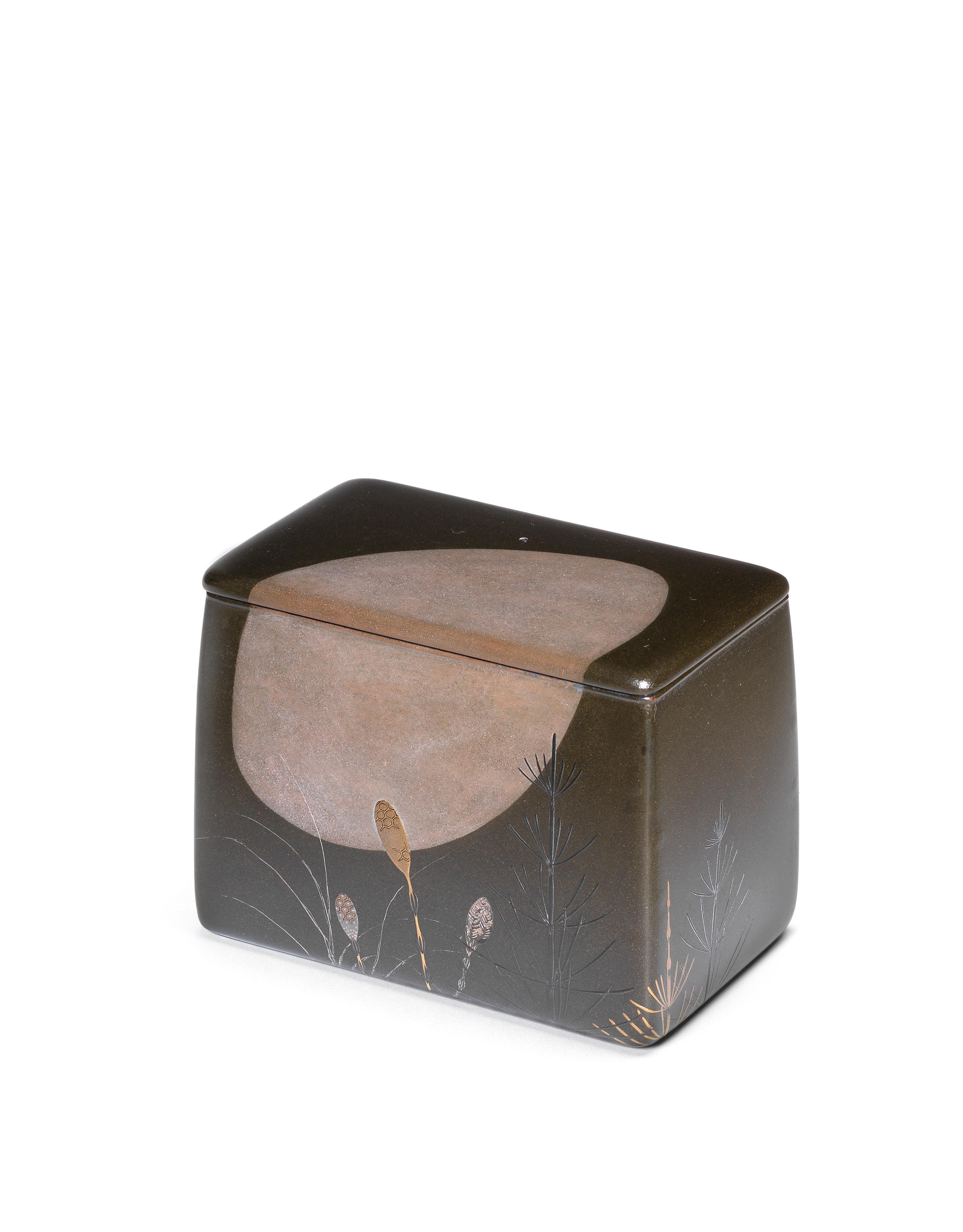
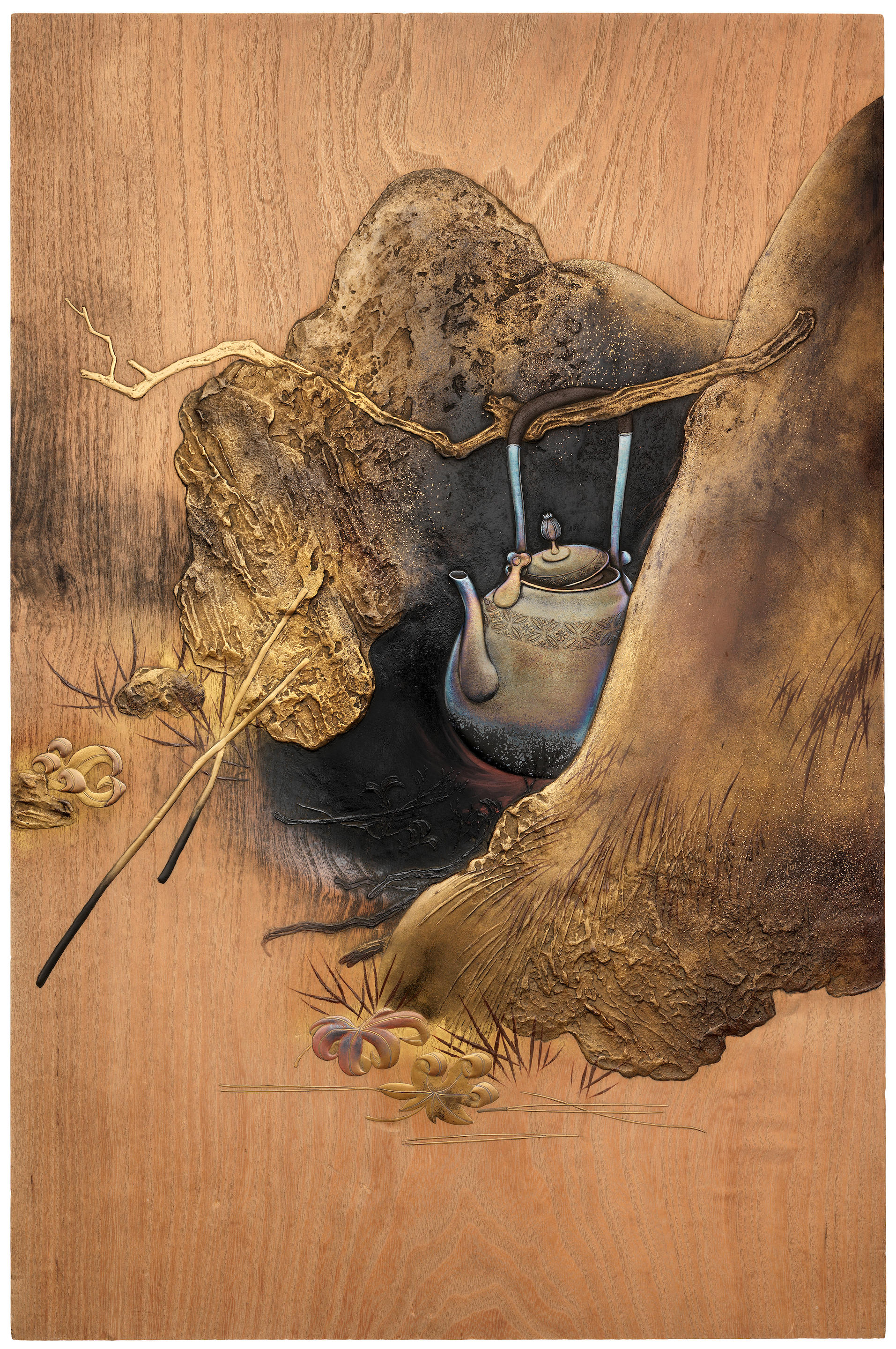
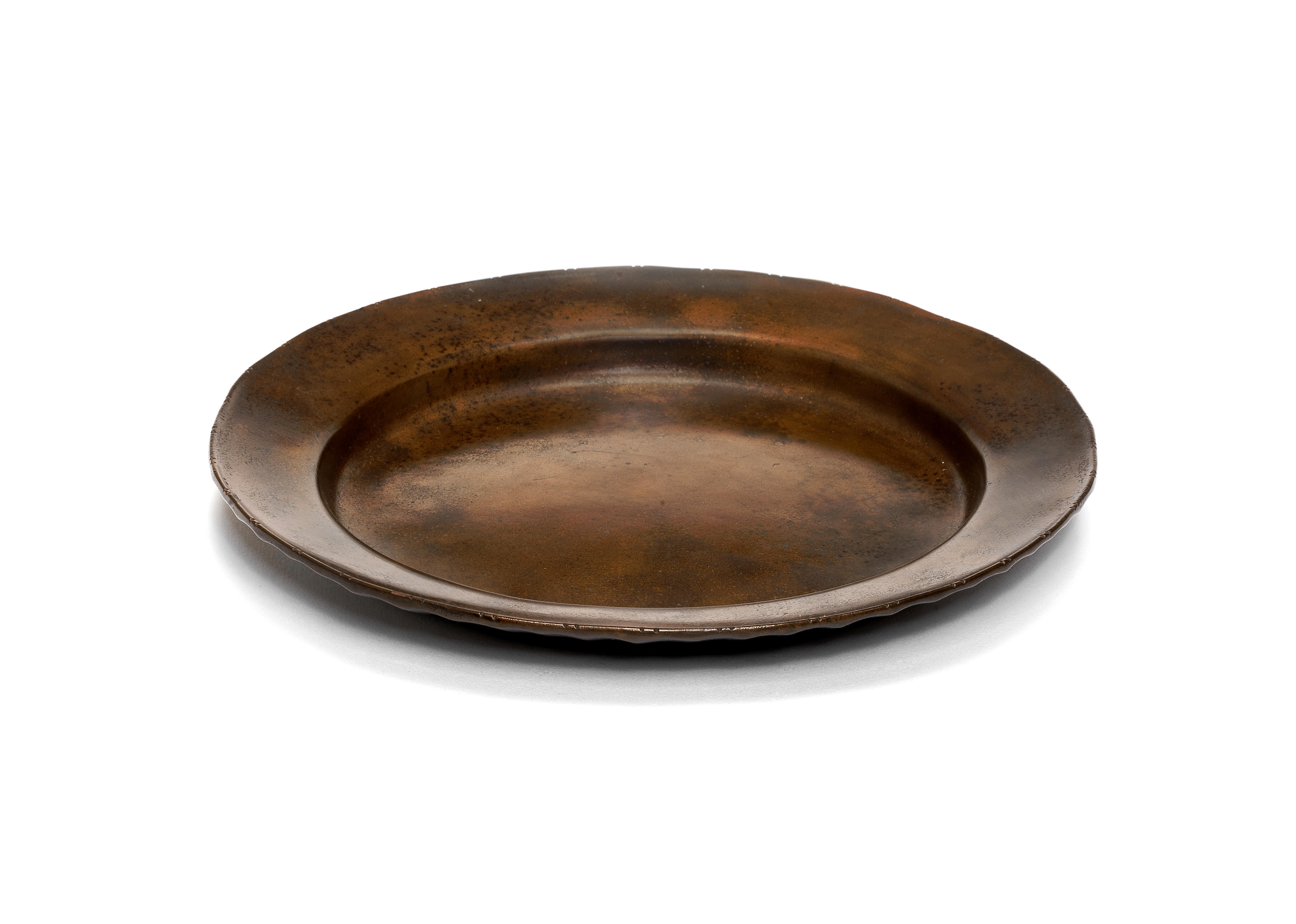
Testen Sie LotSearch und seine Premium-Features 7 Tage - ohne Kosten!
Lassen Sie sich automatisch über neue Objekte in kommenden Auktionen benachrichtigen.
Suchauftrag anlegen